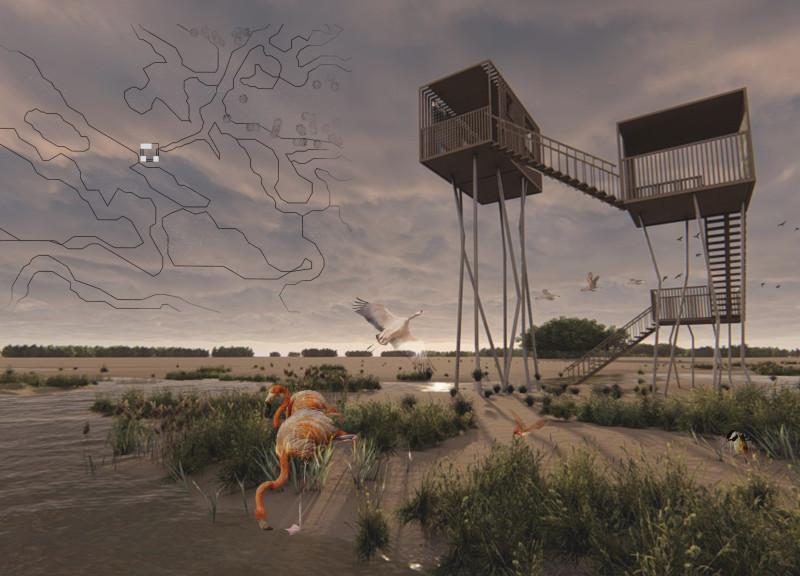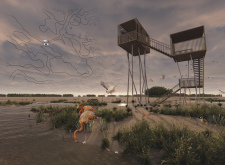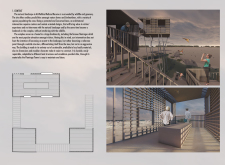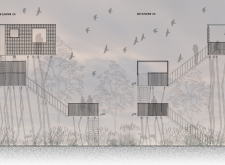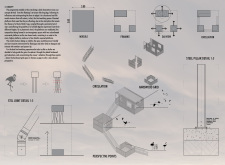5 key facts about this project
The primary function of the Flamingo Tower is to facilitate wildlife observation, providing a space for education and engagement with the ecosystem. The structure allows visitors to view the wetlands from elevated platforms, ensuring minimal disturbance to the habitat while enhancing the visibility of local wildlife, particularly the numerous flamingos that thrive in the area.
Integrating Function with Nature
The Flamingo Tower employs a minimalist structural design characterized by slender steel columns that support two elevated platforms interconnected by a staircase. This particular approach minimizes the visual footprint of the tower, maintaining the natural landscape's integrity. The use of an open framework with slatted wooden walls further enhances the experience by allowing natural light and air to permeate the structure, ensuring a continuous visual connection to the environment without obstructing the view.
The architectural design prioritizes sustainable practices by using locally sourced materials, such as hardwood and concrete, that withstand the region's environmental conditions. This careful selection of materials reflects a commitment to durability while aligning with contemporary ecological standards. The elevated nature of the platforms encourages visitors to observe fauna without intruding upon their habitat, defining a conscientious relationship between architecture and nature.
A Unique Approach to Visitor Interaction
What distinguishes the Flamingo Tower from other observation structures is its thoughtful integration within the wetland context. The design not only accommodates the viewing needs of its users but also considers the ecological balance of the environment. The varying heights and sizes of the observation platforms create diversity in the visitor experience, allowing for both intimate and expansive views of the wetlands.
The cyclical flow of movement between the tower's levels invites interaction and exploration, enabling visitors to appreciate the dynamic nature of the wetland ecosystem. This design encourages longer visits, fostering a deeper understanding of the environment and its significance.
For those interested in delving deeper into the architectural aspects of the Flamingo Tower, it is advisable to explore the architectural plans and sections associated with the project. These materials provide further insight into the design methodology, spatial organization, and architectural ideas that bring this project to life. Investigating these elements will enhance one’s understanding of the unique features and intentions behind the Flamingo Tower design.


